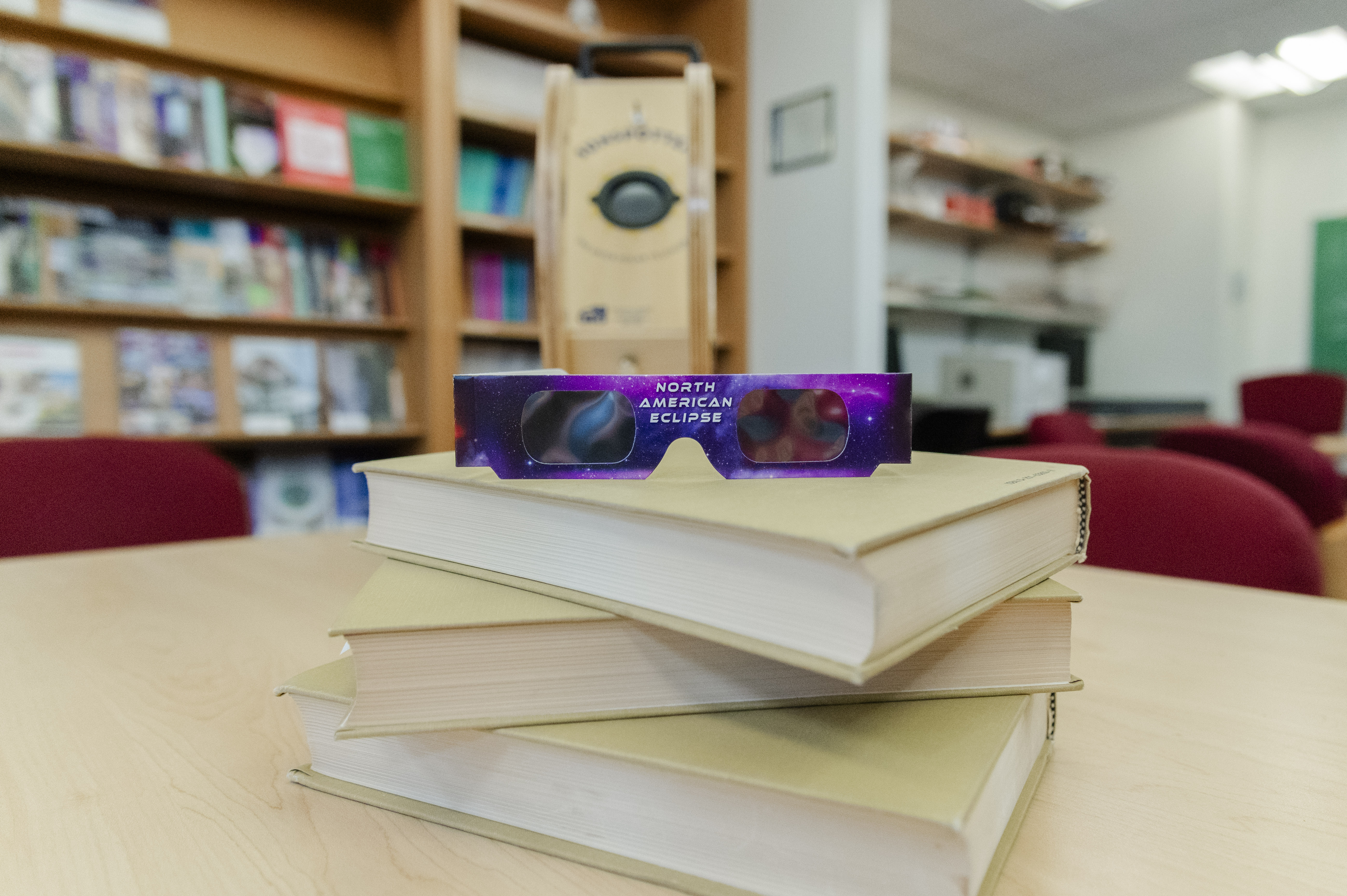Wabash College community members gathered April 8 when Crawfordsville experienced one of the greatest natural phenomena that can occur in our skies: a total solar eclipse.
A total solar eclipse happens when the moon passes between the sun and earth, completely blocking the face of the sun. People who viewed the eclipse from locations where the moon’s shadow completely covers the sun—known as the path of totality—experienced a total solar eclipse.

Students, faculty, staff, and the surrounding community were invited to attend an eclipse viewing party from 1:45 to 4 p.m. at Little Giant Stadium.
Hosted by the physics department, the event featured solar telescopes, projectors, and various stations that displayed the progress of the eclipse and other educational materials, along with live commentary counting down the various eclipse events leading up to totality.
Approved viewing glasses were provided to the first 900 students, faculty, and staff members to arrive to the stadium. Outside guests were asked to bring their own glasses for safe viewing of the eclipse.
Although the campus was just barely inside the eclipse path, Wabash experienced approximately one minute of totality beginning around 3:06 p.m.
“This is the first time a total eclipse has crossed this location since 1806 before the College’s founding in 1832,” Associate Teaching Professor of Physics Gaylon Ross said ahead of the event. “The next total eclipse won’t occur in Crawfordsville until 2153.
“To get a total eclipse that hits a certain location on earth, you’ve got to be very fortunate,” he continued. “Calling it a once-in-a-lifetime event is not a misstatement. It’s one of the rarest events that can occur, and you shouldn’t miss out on the opportunity.”
The partial eclipse began at 1:50 p.m. Around that time, viewers witnessed different behaviors of animals, changing colors of the sky, and unique shape-shifting shadows.
During the total solar eclipse, the sky became dark as if it were dawn or dusk. People along the path of totality saw the sun’s corona, or outer atmosphere, which is usually obscured by the bright face of the sun.
Wabash hosted other events leading up to and on the day of the total solar eclipse.

Ross hosted a physics colloquium titled “A Guide to the Great American Eclipse of 2024” at 12:10 p.m. on April 1 in Goodrich Hall room 104.
Alumni and friends were invited to join an After the Bell session at 7:30 p.m. on April 3. Ross, along with Associate Professor of Mathematics and Computer Science Colin McKinney, hosted an interactive talk titled “Bashin’ the Eclipse: The Great American Eclipse of April 8, 2024” via Zoom. The two discussed the science behind solar eclipses, the reasons they are so rare yet so predictable, and the path of totality and times for specific events related to this particular eclipse.
Ahead of the viewing party in Little Giant Stadium, Professor of Spanish and Asian Studies Dan Rogers hosted a humanities colloquium titled “Influence of Eclipses Around the World” at 12:10 p.m. on April 8 in Hays Hall room 104.
Students were also invited to attend a viewing of NASA’s 2024 Total Solar Eclipse Broadcast in Salter Hall. From 1 to 4 p.m., there was live coverage of the eclipse from Kerrville, Texas; Russellville, Arkansas; Indianapolis, Indiana; and Cleveland, Ohio.